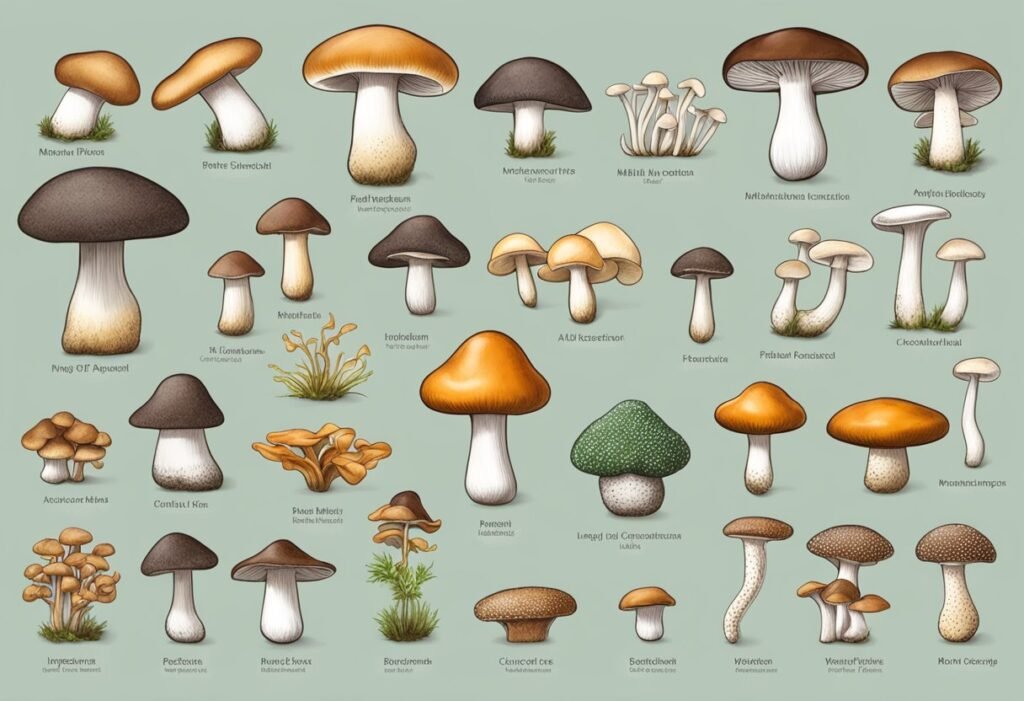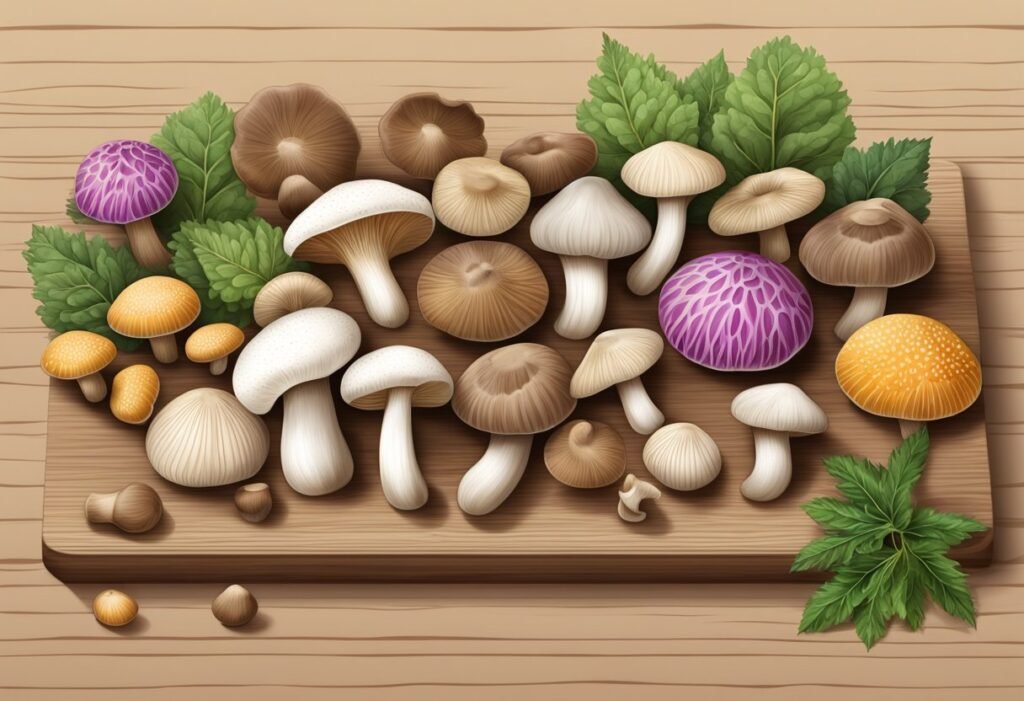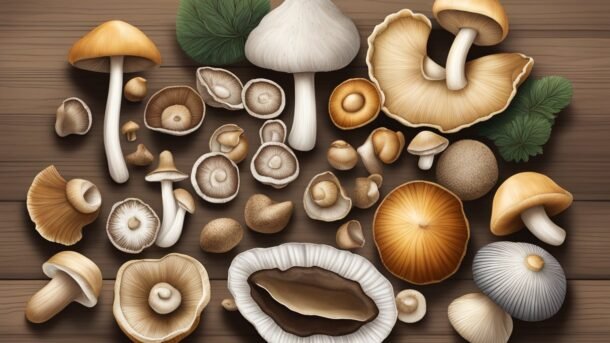Mushrooms are a popular ingredient in many dishes, and for good reason. Not only do they add a delicious earthy flavor, but they are also a great source of nutrients. One nutrient that many people are interested in is protein. While mushrooms are not typically thought of as a high protein food, there are some varieties that are surprisingly high in this macronutrient.
One of the highest protein mushrooms is the white mushroom, also known as the button mushroom. These mushrooms are not only the most commonly consumed variety, but they also contain some of the highest amounts of protein and vitamins out of all the mushroom types. In fact, white mushrooms contain 3.2g of protein per 100g. Other high protein mushrooms include oyster mushrooms, which contain 7% of the recommended daily value (DV) of protein per 100g, and morels and white button mushrooms, which contain 6% of the DV.
While mushrooms may not be as high in protein as some animal-based foods, they are still a great addition to a well-rounded diet. In addition to protein, mushrooms are also a good source of copper, B vitamins, potassium, and iron. By incorporating a variety of mushrooms into meals, individuals can reap the many nutritional benefits that these fungi have to offer.
Nutritional Profile of Mushrooms

Mushrooms are a great source of nutrition, including protein. They are low in calories and high in fiber, making them a healthy addition to any diet. Below is a breakdown of the nutritional profile of some common edible mushrooms.
Protein Content in Common Edible Mushrooms
| Mushroom Type | Protein Content per 100g |
|---|---|
| Maitake | 1.9g |
| Portobello | 3.9g |
| Shiitake | 2.2g |
| White Button | 3.0g |
As shown in the table above, some mushrooms are higher in protein than others. Portobello and white button mushrooms have the highest protein content among the common edible mushrooms, with 3.9g and 3.0g per 100g, respectively. Maitake and shiitake mushrooms have a lower protein content, but they are still a good source of protein.
Comparison with Other Protein Sources
While mushrooms are a good source of protein, they are not as high in protein as some other foods. Animal-based protein sources, such as meat, poultry, and fish, are generally higher in protein than mushrooms. However, mushrooms are a good option for vegetarians and vegans who are looking for plant-based sources of protein.
In conclusion, mushrooms are a nutritious food that can be a good source of protein. While they may not be as high in protein as some other foods, they are still a healthy addition to any diet.
High-Protein Mushroom Varieties

Mushrooms are an excellent source of protein, and incorporating them into your diet can provide numerous health benefits. Here are some of the highest protein mushroom varieties:
Oyster Mushrooms
Oyster mushrooms are one of the most protein-rich mushroom varieties and are also a source of riboflavin, niacin, and vitamin B5. A 100-gram serving of oyster mushrooms contains 7% DV protein, 25% DV niacin, 13% DV pantothenic acid, and 21% DV riboflavin. These mushrooms have a delicate flavor and texture, making them a popular choice for stir-fries, soups, and stews.
Maitake Mushrooms
Maitake mushrooms, also known as “hen of the woods,” are another excellent source of protein. They contain approximately 1.9 grams of protein per 100-gram serving. These mushrooms have a rich, earthy flavor and are often used in Japanese and Chinese cuisine. Maitake mushrooms can be sautéed, roasted, or grilled and are a delicious addition to salads, pasta dishes, and stir-fries.
Portobello Mushrooms
Portobello mushrooms are a popular mushroom variety that is also high in protein. They contain approximately 5 grams of protein per 100-gram serving. These mushrooms have a meaty texture and are often used as a vegetarian substitute for meat in burgers, sandwiches, and wraps. Portobello mushrooms can be grilled, roasted, or sautéed and are a versatile ingredient in many dishes.
Shiitake Mushrooms
Shiitake mushrooms are another high-protein mushroom variety that is also a good source of vitamins and minerals. A 100-gram serving of shiitake mushrooms contains 2.2 grams of protein, 72% DV copper, 52% DV selenium, and 51% DV vitamin B5. These mushrooms have a rich, savory flavor and are often used in Asian cuisine. Shiitake mushrooms can be sautéed, stir-fried, or added to soups and stews.
Incorporating these high-protein mushroom varieties into your diet can provide numerous health benefits. They are a delicious and nutritious addition to any meal and can be used in a variety of dishes.
Benefits of Protein in Mushrooms
Mushrooms are a great source of protein for vegetarians and vegans. They contain all the essential amino acids, which are the building blocks of proteins. The protein content in mushrooms varies depending on the type of mushroom, with some mushrooms containing more protein than others.
Muscle Growth and Repair
Protein is essential for muscle growth and repair. It helps to build and repair muscle tissue, which is important for athletes and people who engage in regular physical activity. Mushrooms are a great source of protein for people who want to build and maintain muscle mass.
Weight Management and Satiety
Protein is also important for weight management and satiety. It helps to keep you feeling full and satisfied, which can help you to eat less and lose weight. Mushrooms are a low-calorie, high-fiber food choice that can help you to feel full and satisfied without consuming too many calories.
In conclusion, mushrooms are a great source of protein that can help to promote muscle growth and repair, as well as weight management and satiety. Incorporating mushrooms into your diet can provide you with a variety of health benefits.
Incorporating High-Protein Mushrooms into Diet
Mushrooms are versatile ingredients that can be incorporated into a wide range of dishes. With their high protein content, they are a great addition to any diet. Here are some culinary uses, recipes, and preparation tips for incorporating high-protein mushrooms into your diet.
Culinary Uses
High-protein mushrooms such as portobello, oyster, maitake, and enoki can be used in a variety of ways in the kitchen. They can be sautéed, grilled, roasted, or even eaten raw in salads. Here are some ideas for incorporating these mushrooms into your meals:
- Sautéed mushrooms: Sauté sliced mushrooms in olive oil or butter until they are browned and tender. Season with salt and pepper to taste. Serve as a side dish or use as a topping for burgers, pizzas, or pasta dishes.
- Grilled mushrooms: Brush whole mushrooms with olive oil and season with salt and pepper. Grill over medium-high heat until they are charred and tender. Serve as a side dish or use as a topping for sandwiches or salads.
- Roasted mushrooms: Toss sliced mushrooms with olive oil, garlic, and herbs. Roast in the oven at 400°F for 20-25 minutes, or until they are browned and tender. Serve as a side dish or use as a topping for pizzas or pasta dishes.
- Raw mushrooms: Slice raw mushrooms thinly and add them to salads or sandwiches for a crunchy texture and earthy flavor.
Recipes and Preparation Tips
Here are some recipes and preparation tips for incorporating high-protein mushrooms into your diet:
- Mushroom and Quinoa Salad: Cook quinoa according to package instructions. Sauté sliced mushrooms in olive oil and garlic until they are browned and tender. Toss quinoa with the sautéed mushrooms, chopped herbs, and a squeeze of lemon juice. Serve as a side dish or a light lunch.
- Mushroom and Spinach Omelet: Whisk together eggs, milk, salt, and pepper in a bowl. Sauté sliced mushrooms and spinach in a nonstick skillet until they are tender. Pour the egg mixture over the vegetables and cook until the eggs are set. Fold the omelet in half and serve hot.
- Mushroom and Beef Stir-Fry: Marinate sliced beef in soy sauce, ginger, and garlic for 30 minutes. Sauté sliced mushrooms and onions in a wok until they are tender. Add the marinated beef and stir-fry until it is cooked through. Serve hot over rice or noodles.
Incorporating high-protein mushrooms into your diet is easy and delicious. Try these ideas for culinary uses, recipes, and preparation tips to enjoy the benefits of these nutritious ingredients.
Considerations and Limitations
Allergies and Intolerances
While mushrooms are generally considered safe and nutritious, some individuals may have allergies or intolerances to certain types of mushrooms. For example, those who are allergic to other fungi, such as molds or yeasts, may also be allergic to mushrooms. Symptoms of a mushroom allergy can range from mild to severe and can include itching, swelling, and difficulty breathing. It is important for individuals with known allergies or intolerances to mushrooms to avoid consuming them or to seek medical advice before doing so.
Mushroom Cultivation and Availability
Another consideration when choosing mushrooms for their protein content is their cultivation and availability. Some types of mushrooms, such as oyster mushrooms, are relatively easy to cultivate and are widely available in grocery stores and markets. Other types, such as morels, may be more difficult to find and may be more expensive. It is also important to consider the source of the mushrooms and whether they have been grown in a safe and sustainable manner.
In addition, the protein content of mushrooms can vary depending on a variety of factors, including the type of mushroom, the growing conditions, and the harvesting method. While some types of mushrooms, such as oyster mushrooms, are known to be relatively high in protein, others may contain lower amounts. It is important to do research and consult with a healthcare professional or nutritionist to determine the best types of mushrooms to incorporate into a high-protein diet.




